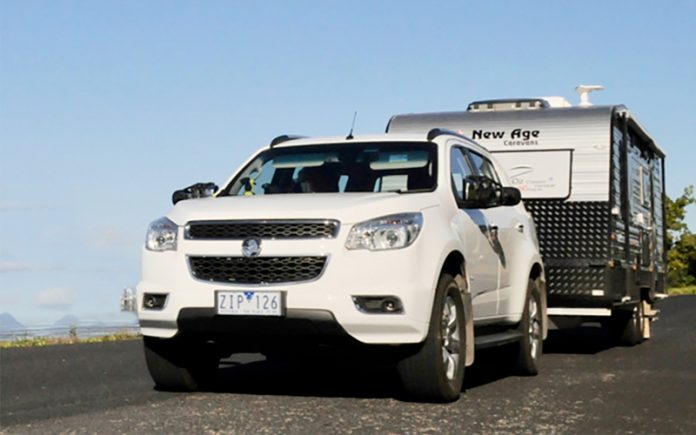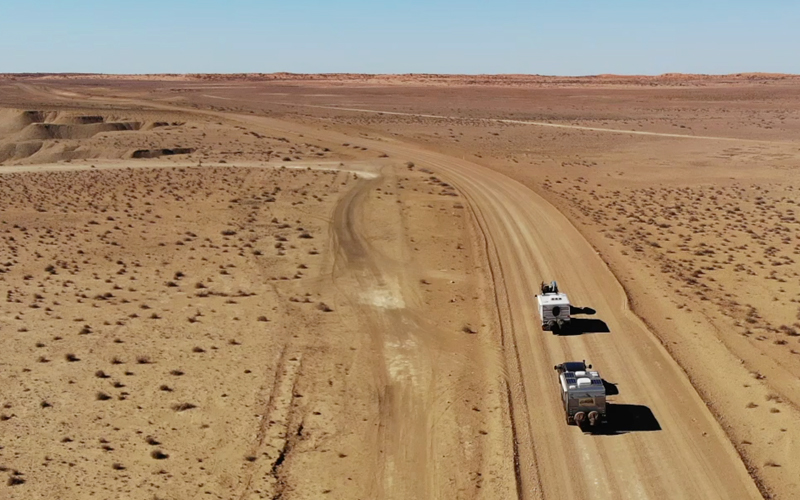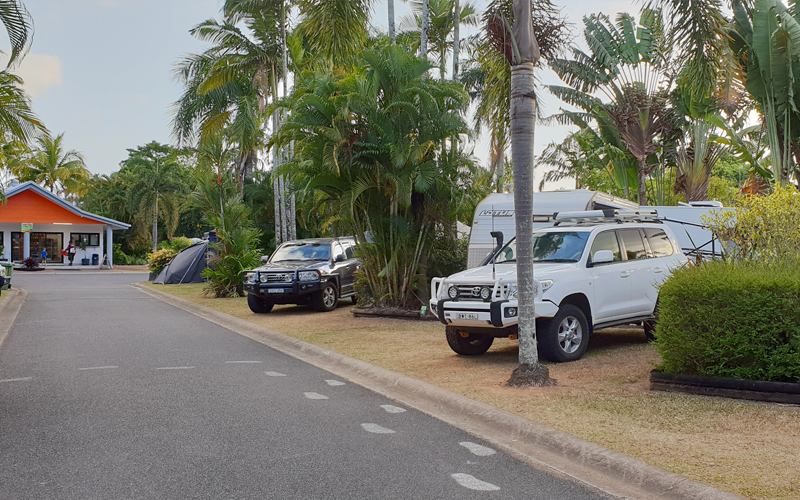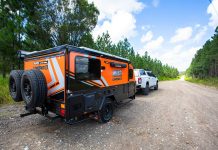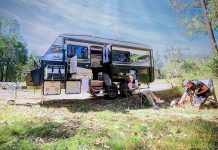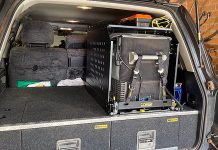When I first towed a caravan, I was nervous. I was at the wheel of a HiLux and my intention was to tow a pop-top to the Great Ocean Road to meet some friends. It was 20 years ago and, if I’m honest, I had no idea if the vehicle was legally capable of the task. My reasoning was simple: the tow vehicle was a 4WD, it looked capable, and it had a towbar.
I suspect plenty of caravanners have reduced the equation to this basic formula before. So let me relay my early towing experiences and offer some insight into what you should expect the first time you tow a van. Old hands might find this useful, too.
After hitching up, I set off. Was the rear of the vehicle sagging under the weight of the pop-top’s ball mass? I have no idea – I didn’t know to check. In hindsight, it probably wasn’t. I do recall, however, feeling quite pleased with myself for managing to hitch up myself.
I doubt I crossed the safety chains and wouldn’t have understood the benefit – that crossed chains can ‘catch’ the coupling if the van and vehicle become decoupled. The journey to the Great Ocean Road was, fortunately, uneventful. Instinctively, I kept to the left lane on the freeway wherever possible and I checked my mirrors frequently.
There are legal criteria to determine whether or not you require extension mirrors when towing. In most cases, these criteria mean that every caravanner will need them. It’s possible I didn’t have tow mirrors fitted on my maiden voyage – I don’t recall. Nowadays, of course, I wouldn’t dream of not fitting them. Here’s how I set them up…
MIRROR IMAGE
When using the clip-on style of mirror, I ensure the rig is straight and then set the mirrors wide enough so that when I stand in the back corner of the van and look along the side, I can see that the very inside edge of the tow mirror is in line with the side of the van. Back in the cab, I might need to make some small adjustments, but the above is a good first step. Standing directly in line with the rearmost corners of the van, about 20m away from the mirrors, and checking if the entire mirror is visible, is another approach.
Ultimately, your tow mirrors should provide a wide view of the road behind out to at least 4m. Again, there are legal requirements involved, but at the very least, if you can’t clearly see the rear corners of your van, not to mention all activity in the lanes to the right and left, then you need to rethink what you’re doing. Some clip-on mirrors are prone to movement, whether caused by the wind, passing road trains, or vibrations from the road. It’s therefore sensible to check their alignment from time to time.
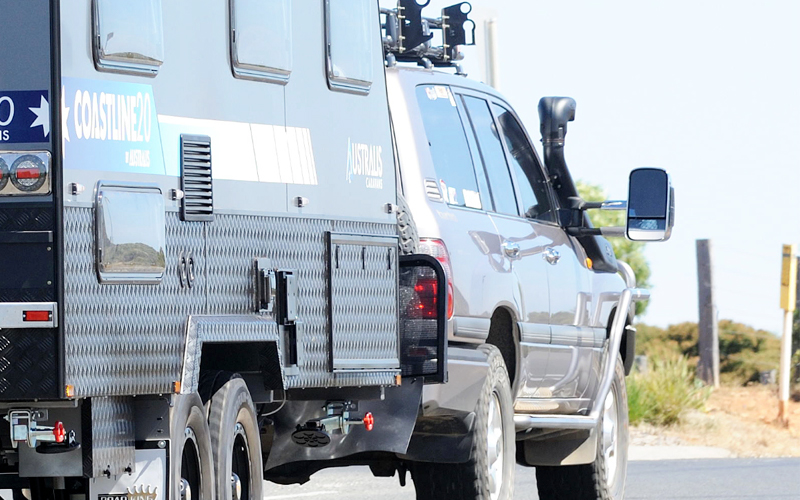
WHICH LANE WHEN TOWING?
I recall negotiating secondary roads and tight streets on my maiden caravan voyage. And that made me nervous. Overhead obstacles such as branches, cars parked at the kerb, pedestrians… it added up to a harrowing experience.
In these situations, it pays to proceed with utmost caution. Check your mirrors frequently, and bear in mind that a caravan will ‘cut in’ around corners – meaning, it will take a shorter path than the tow vehicle. The potential to sideswipe a signpost or tree is real. Taking a wider path with the tow vehicle is almost always necessary, but there’s no hard and fast rule – it all depends on the traffic situation and the nature of the corner.
Experience helps, but caution, common sense and a weather eye on the mirrors are essential. And don’t forget about the caravan’s outside tail sweep as you round the corner. Are there any objects in its path? If the combined length of your tow vehicle and caravan exceed 7.5m, you are legally entitled to display a ‘Do Not Overtake Turning Vehicle’ sign.
Some secondary roads may have multiple lanes. While it’s true you should keep to the left wherever possible, it makes little sense if the left lane is blocked by parked cars or other obstacles. Use your best judgement and pull over if necessary to allow built-up traffic behind to safely pass. On the freeway, I always keep to the left lane – for a variety of reasons, you may not be able to travel at the posted speed limit, which will only frustrate other motorists who can’t pass.
Importantly, I try to maintain a constant speed (conditions depending), especially when vehicles are approaching from behind. It’s quite likely that these motorists will have already decided on how to overtake you. By altering my speed, I am altering their calculations which, again, will only lead to frustration.
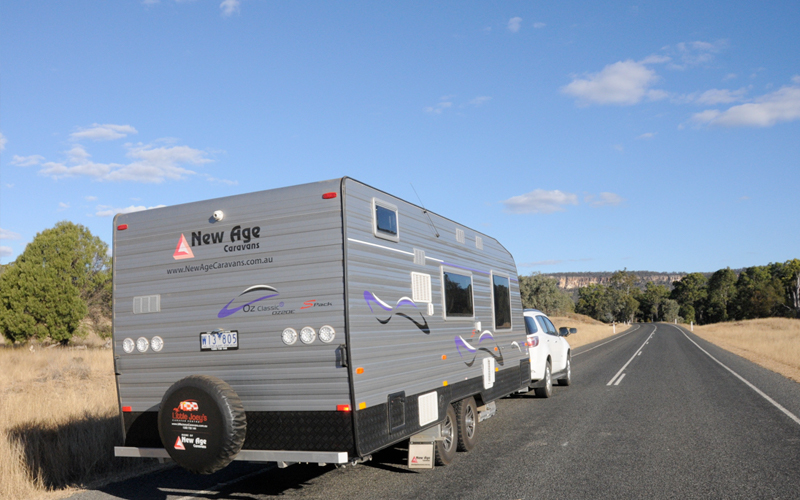
RV FEATURE SHOULD I OVERTAKE?
Caravans are inherently unstable objects, with an unsteered coupling up front and a wheel set way back on the trailer. Yes, they are safe if loaded and towed appropriately. However, their stability is also determined by the tow vehicle’s ability to control it as well as the prevailing weather and road conditions. In short: it does not necessarily take much for a towing combination to become unstable. Whether or not to use the right-hand lane to overtake traffic is, therefore, impossible to answer.
Like most things in life, it comes down to judgement. In my own experience, I would prefer to stick to the left lane on a freeway and travel a little slower rather than risk an overtaking manoeuvre at 100km/h. With their high sides, which can catch the wind of a passing truck or be subjected to other dynamic forces, caravans are not designed to be handled frivolously. This is not to say overtaking is never possible. Again: your judgement as the driver is all-important.
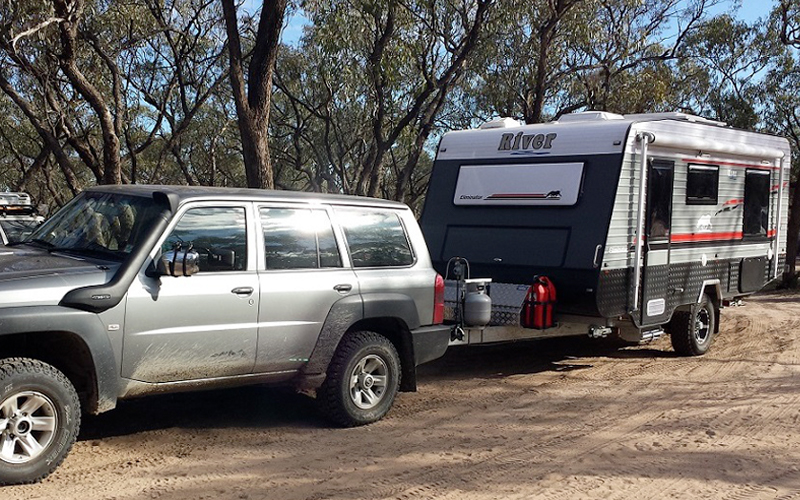
BRAKING
One thing I quickly learned when towing for the first time was that I needed to cater for an increased braking distance. It’s not unusual for a fully-loaded van to weigh more than the tow vehicle, and if you’ve ever felt your van ‘pushing’ your tow vehicle as you depress your brake pedal, you’ll know the importance of correct braking when towing. If your van weighs more than 750kg, it will have its own braking system (either electric or override, depending on the weight of the van), but it will still never pull up as quickly as an unhitched car.
Incidentally, I was travelling on the Pacific Highway a number of years ago, somewhere on the mid-north coast of New South Wales, when the traffic in front came to a sudden stop. I hit the anchors. Had I not maintained a larger gap, aware of that increased braking distance, and had I not had the van’s electric brakes adjusted correctly, I have no doubt that I’d have rear-ended the Honda Civic in front.
HOW FAST SHOULD I TRAVEL?
Heading along the Western Freeway towards the Great Ocean Road, I travelled at least 10km/h under the speed limit. Actually, it’s possible that it was more like 20km/h. This is not necessarily the best advice. Travelling inordinately slowly creates problems of its own, that’s true. But nor should caravanners – especially new ones who are coming to grips with towing – feel pressured to travel beyond their rig’s ability.
Having said that, the caravanner has a responsibility to ensure their rig is safe and suitable for all traffic conditions. Every van/vehicle combo has a ‘sweet spot’, in my opinion. You’ll also need to accept that your tow vehicle simply will not accelerate as quickly when hitched to a van. Even the twin-turbo V8 Land Cruiser 200 will take a moment or two longer to get going. That’s something the following motorists should expect and factor in to their own driving calculations.
DEALING WITH SWAY
Many caravans come from the factory with an inbuilt sway control device, and I think they are fantastic pieces of equipment. If yours does not have sway control, consider having it retrofitted. In any event, caravanners have been dealing with sway since caravans were invented. It can happen for a variety of reasons. The important thing is to know how to handle it. The ‘myth’ that you should speed up has some foundation in fact.
The idea is to ‘stretch’ the caravan/ vehicle combination, thereby eliminating the sway. The reality is that few vehicles are capable of providing this kind of on-demand power and torque. I still believe the best advice is to apply the override function of the brake controller without braking the vehicle itself. This will independently apply the van’s brakes. I believe that applying the override function should become as natural to you as flicking on your indicators.
And then, it’s important to consider why the sway occurred in the first place. Was it a freak incident caused by environmental conditions? Was the tow vehicle unsuitable? Or was the van improperly loaded?
TIGHT SPOTS
If you’re new to towing, you will soon learn that manoeuvring your rig in tight spaces, such as supermarket carparks, is not easy. The best advice: unless you are completely confident and have an ‘exit strategy’ – how will you turn the rig around again? – then just avoid them. Keep driving until you find somewhere open, safe and sensible to park, allowing you to get back on the road with a minimum of emotional expenditure.
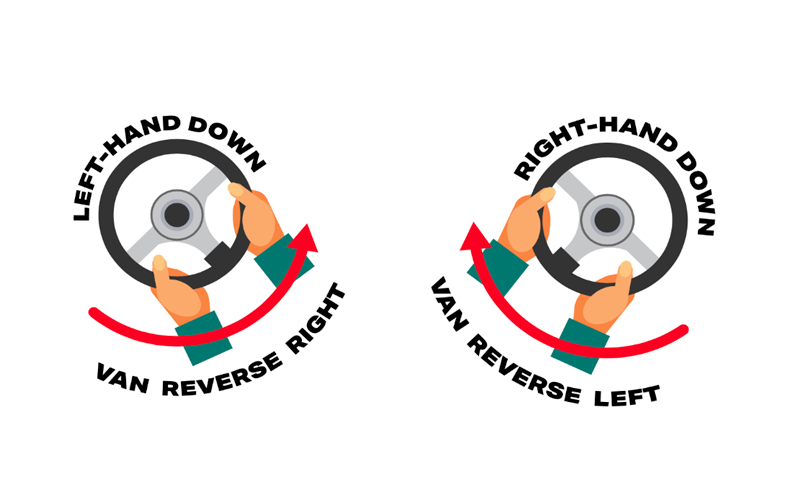
REVERSING
A word on backing up the van. This is not for the faint of heart and never feel embarrassed about asking for help. In time, your skills will develop. Nowadays, I’m as cool as a cucumber. But when I finally arrived on site at my Great Ocean Road destination, do you think I could back the van? No – I was the butt of many jokes that evening.
The advice that finally turned things around for me: hold the wheel at the bottom and turn it in the direction you wish the van to travel. This helps the brain overcome the fact that you need to turn the wheel in the opposite direction to the direction you’d turn it when unhitched. If you want to reverse the van in a straight line, aim to keep equal amounts of the van in both tow mirrors.
FINALLY…
Don’t believe anyone who says that towing a large van in traffic, or even on a freeway, is easy and not stressful. If it doesn’t heighten your senses at least a little, you are not paying attention. You should be constantly assessing how the rig ‘feels’ on the road. Is the van pitching on the towbar, or yawing a little more than expected?
Will the van clear that overhead branch or bridge? With experience, you will become more attuned to your rig’s towing dynamics and develop a practical sense of its dimensions, and the stress factor will lesson. I don’t think it goes away completely, and nor should it. Remember: take it easy. Why are you rushing? Apply common sense and good judgement. Those two things, along with a safe, legal and properly loaded caravan, should see you to your destination.


